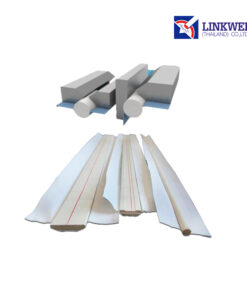
Welding Tungsten Electrodes
Related products
Welding Consumables
Characteristics: LKE-7016 is a low hydrogen type electrode for the welding of high tensile steel. The welding can be done with stable arc, less spatters, good slag removability, good slag covering and good X-ray soundness. Applications: It is suitable for low alloy steels, medium carbon steels, heavy steel plates, cast steels and steels of poor
Welding Consumables
Characteristics: LFC-711 is a flux-cored wire design to be use with CO2 gas. It can be used on all-position welding with both single and multiple pass welds on mild steels and 490N/mm2 high tensile steel. With good impact toughness, less fume, stable arc, easy slag removal and excellent X-Ray inspection. Applications: It is widely used
Welding Consumables
Super Welding Crack Checker Liquid penetrant test is one of the most popular Nondestructive testing (NDT) methods in the industry. When compare with to other NDT methods. This methods is economical, versatile, and requires minimal training, Liquid penetrant test check for material flaws open to the surface This fluid(Penetrant) seeps into any defects such as
Welding Consumables
Characteristics: Heat resistance, corrosion resistance and toughness of LKE-310 are good. The weld metal is a full austenite structure containing 25%Cr-20%Ni. It is not necessary to preheat and postweld heat treatment. Applications: It is suitable for the welding of dissimilar metals, low-temperature service stainless steel, mild steel and Cr-Mo steel. Notes on Usage: 1.Dry the
Welding Consumables
Characteristics: The weld metal of LKE-308L is a rutile electrode for welding low carbon 18Cr-8Ni stainless steel. LKE-308L contains low carbon to avoid carbide precipitation during welding. Applications: It is suitable for welding of stainless steel piping in refinery, oil and gas industries, and chemical plants. Notes on Usage: 1.Dry the electrodes at 200-250°C for
Welding Consumables
Characteristics LKM-56 is designed for welding of mild steel and 490N/mm2 grade steel. Commonly used is butt or fillet welding. It performs with smooth wire feeding, stable arc, low spatter loss and high deposition efficiency. Applications: It is suitable for welding of vehicles, ships, buildings and bridges. Classification: AWS A5.18 ER70S-6 JIS Z3312 YGW12 Typical












